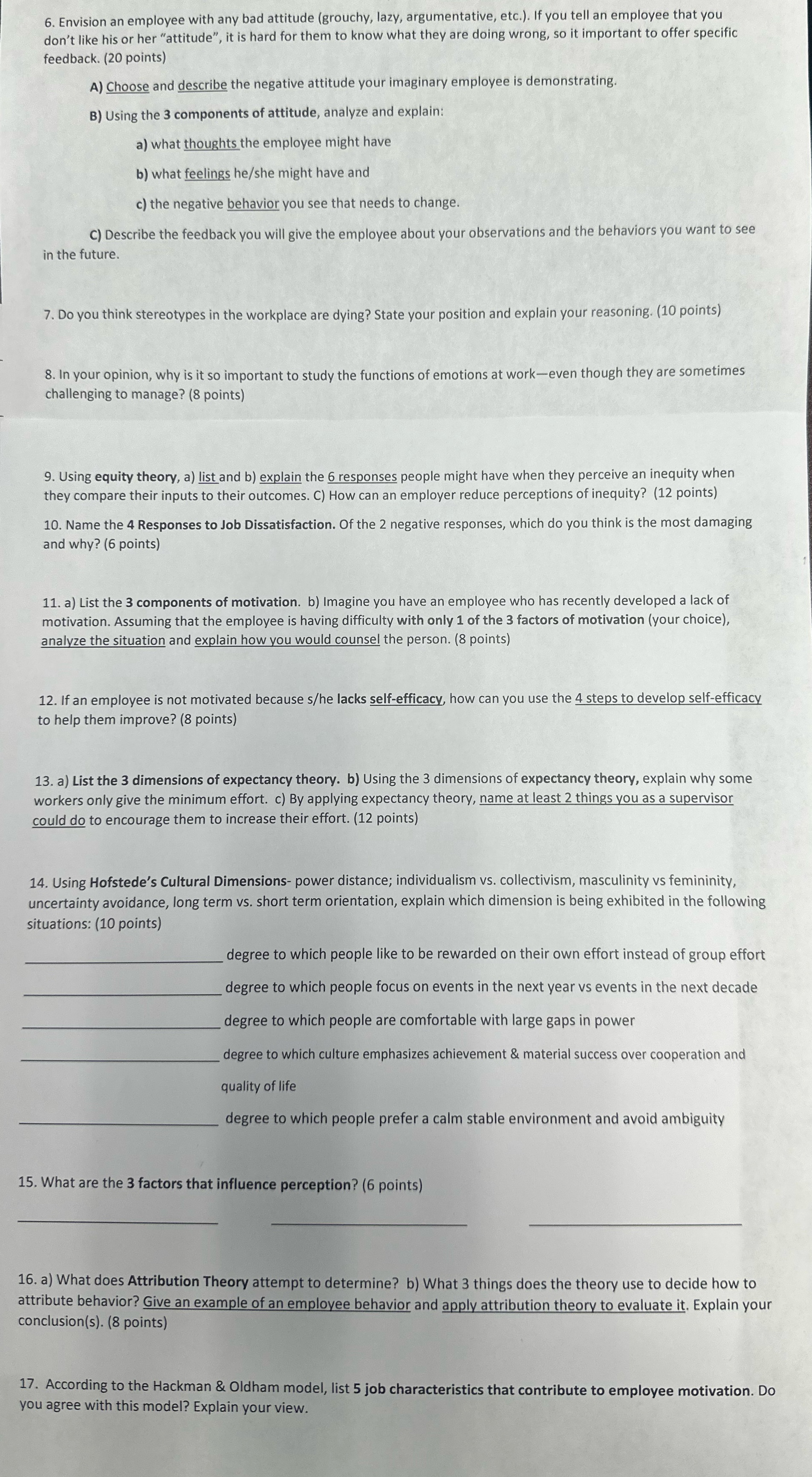6. Envision an employee with any bad attitude (grouchy, lazy, argumentative, etc.). If you tell an employee that you don't like his or her "attitude", it is hard for them to know what they are doing wrong, so it important to offer specific feedback. (20 points) A) Choose and describe the negative attitude your imaginary employee is demonstrating. B) Using the 3 components of attitude, analyze and explain: a) what thoughts the employee might have b) what feelings he/she might have and c) the negative behavior you see that needs to change. C) Describe the feedback you will give the employee about your observations and the behaviors you want to see in the future. 7. Do you think stereotypes in the workplace are dying? State your position and explain your reasoning. (10 points) 8. In your opinion, why is it so important to study the functions of emotions at work-even though they are sometimes challenging to manage? (8 points) 9. Using equity theory, a) list and b) explain the 6 responses people might have when they perceive an inequity when they compare their inputs to their outcomes. C) How can an employer reduce perceptions of inequity? (12 points) 10. Name the 4 Responses to Job Dissatisfaction. Of the 2 negative responses, which do you think is the most damaging and why? (6 points) 11. a) List the 3 components of motivation. b) Imagine you have an employee who has recently developed a lack of motivation. Assuming that the employee is having difficulty with only 1 of the 3 factors of motivation (your choice), analyze the situation and explain how you would counsel the person. (8 points) 12. If an employee is not motivated because s/he lacks self-efficacy, how can you use the 4 steps to develop self-efficacy to help them improve? (8 points) 13. a) List the 3 dimensions of expectancy theory. b) Using the 3 dimensions of expectancy theory, explain why some workers only give the minimum effort. c) By applying expectancy theory, name at least 2 things you as a supervisor could do to encourage them to increase their effort. (12 points) 14. Using Hofstede's Cultural Dimensions- power distance; individualism vs. collectivism, masculinity vs femininity, uncertainty avoidance, long term vs. short term orientation, explain which dimension is being exhibited in the following situations: (10 points) degree to which people like to be rewarded on their own effort instead of group effort degree to which people focus on events in the next year vs events in the next decade degree to which people are comfortable with large gaps in power degree to which culture emphasizes achievement & material success over cooperation and quality of life degree to which people prefer a calm stable environment and avoid ambiguity 15. What are the 3 factors that influence perception? (6 points) 16. a) What does Attribution Theory attempt to determine? b) What 3 things does the theory use to decide how to attribute behavior? Give an example of an employee behavior and apply attribution theory to evaluate it. Explain your conclusion(s). (8 points) 17. According to the Hackman & Oldham model, list 5 job characteristics that contribute to employee motivation. Do you agree with this model? Explain your view







